
The ovipositor is a tube-like organ used by some animals, especially insects, for the laying of eggs. In insects, an ovipositor consists of a maximum of three pairs of appendages. The details and morphology of the ovipositor vary, but typically its form is adapted to functions such as preparing a place for the egg, transmitting the egg, and then placing it properly. For most insects, the organ is used merely to attach the egg to some surface, but for many parasitic species, it is a piercing organ as well.
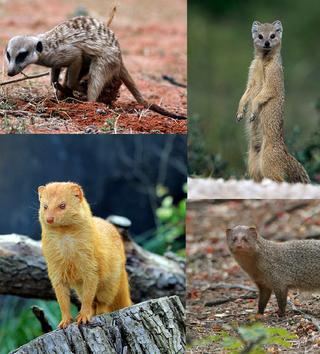
A mongoose is a small terrestrial carnivorous mammal belonging to the family Herpestidae. This family is currently split into two subfamilies, the Herpestinae and the Mungotinae. The Herpestinae comprises 23 living species that are native to southern Europe, Africa and Asia, whereas the Mungotinae comprises 11 species native to Africa. The Herpestidae originated about 21.8 ± 3.6 million years ago in the Early Miocene and genetically diverged into two main genetic lineages between 19.1 and 18.5 ± 3.5 million years ago.

The Egyptian mongoose, also known as ichneumon, is a mongoose species native to the tropical and subtropical grasslands, savannas, and shrublands of Africa and around the Mediterranean Basin in North Africa, the Middle East and the Iberian Peninsula. Whether it is introduced or native to the Iberian Peninsula is in some doubt. Because of its widespread occurrence, it is listed as Least Concern on the IUCN Red List.

The Indian grey mongoose or Asian grey mongoose is a mongoose species native to the Indian subcontinent and West Asia. It is listed as Least Concern on the IUCN Red List.
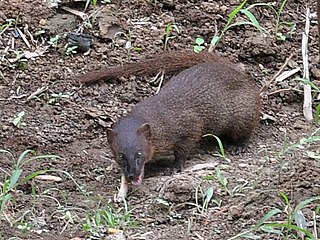
The Javan mongoose is a mongoose species native to Southeast Asia.

Herpestes is a genus within the mongoose family Herpestidae. Several species in the family are known as slender mongooses. It is the type genus of the family, and comprises 5-6 living species, each with several subspecies. Fossil remains of three prehistoric species were excavated in France, and described in 1853.
Diadegma insulare is a wasp first described by Ezra Townsend Cresson in 1865. No subspecies are listed. It is a parasitoid of the diamondback moth, which is a pest of cruciferous crops.
Diadegma chrysostictos is a wasp first described by J.F. Gmelin in 1790. No subspecies are listed.
Polycyrtus vierecki is a species of wasp in the subfamily Cryptinae. It is found in Peru.

Exochus is a genus of ichneumon wasps in the family Ichneumonidae. There are at least 270 described species in Exochus.
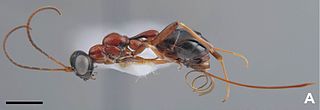
Gelis is a genus of ichneumon wasps in the family Ichneumonidae. There are at least 270 described species in Gelis.

Lissonota is a genus of ichneumon wasps in the family Ichneumonidae. There are at least 390 described species in Lissonota.
Menkokia is a genus of ichneumon wasps in the family Ichneumonidae. There are at least four described species in Menkokia.
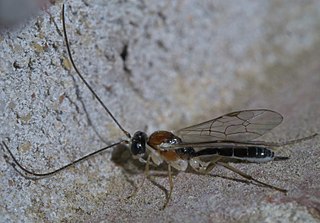
Mesochorus is a genus of ichneumon wasps in the family Ichneumonidae. There are at least 690 described species in Mesochorus.
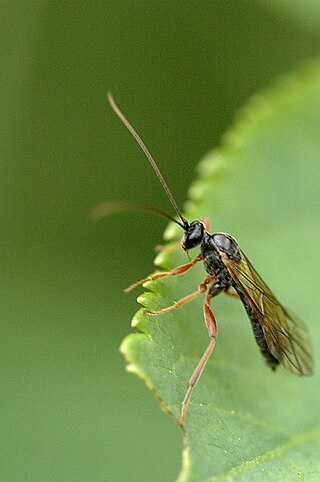
Mesoleius is a genus of ichneumon wasps in the family Ichneumonidae. There are at least 160 described species in Mesoleius.

Polycyrtus neglectus is a species of ichneumon wasp in the family Ichneumonidae.
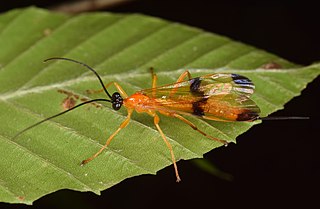
Acrotaphus is a genus of ichneumon wasps in the family Ichneumonidae. There are about 26 described species in Acrotaphus. They are parasitoids of Araneidae and Tetragnathidae spider families.
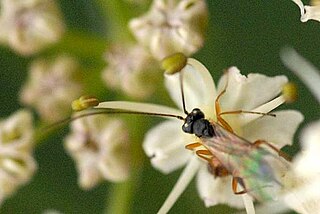
Clistopyga is a genus of ichneumon wasps in the family Ichneumonidae. There are at least 30 described species in Clistopyga.

Urva is a genus comprising the Asian mongooses within the mongoose family Herpestidae. Species in the genus were formerly classified in the genus Herpestes, which is now thought to comprise exclusively African mongooses; phylogenetic evidence indicates that the Asian mongooses form a monophyletic group and had an Asian common ancestor. Urva forms a clade with Xenogale and Atilax, while Herpestes forms a clade with all other African mongoose species.














